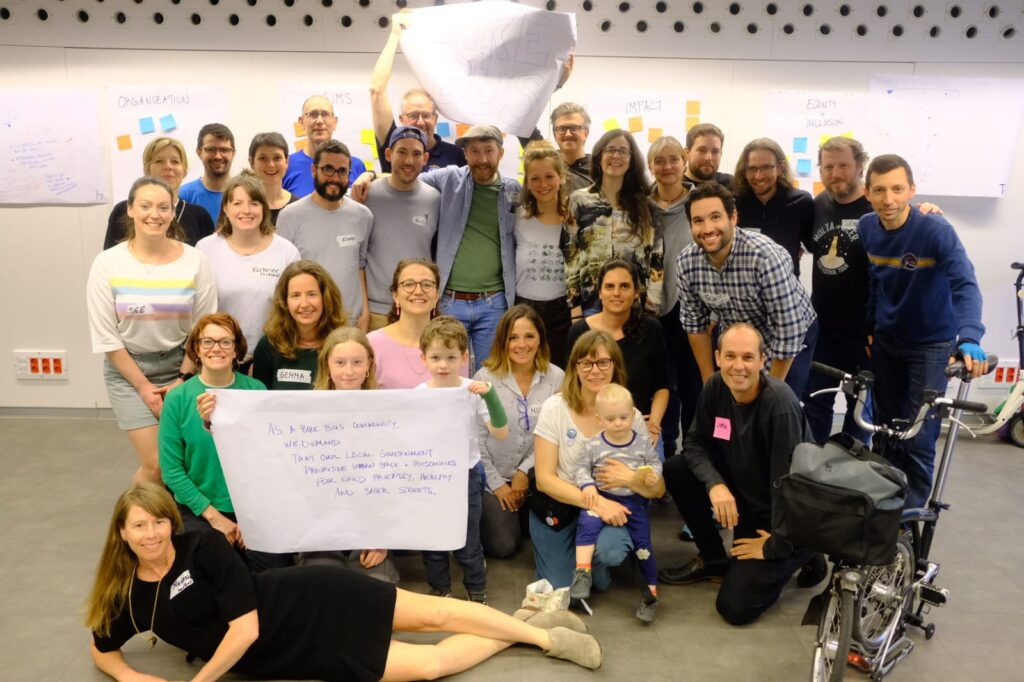Analyze where future participants live
To establish the bicibus routes, we propose to carry out an analysis of the school routes following these steps:
- First, it is important Locate families interested in participating in the bikebus on a map of the municipality.
- Second, evaluate If the route that any of the driving families can take of the project (especially those who live further away) can be used by the rest of the families in that area.
- Third, consider the safest routes to ride a bike, and determine approximately the number of lines that should be drawn.
Decide the most appropriate route based on safety and ease
Regarding security, we will consider the following types of routes in order of priority:
- Dedicated bicycle paths separated from main vehicular traffic and wide enough to allow the group to pass safely
- Exclusive surfaces for pedestrians and bicycles (with Spanish S-28 signage or equivalent in other countries)
- Streets where vehicles have lower priority (reversed priority streets or 30 zones)
- Marked streets to share between bicycles and cars (sharrows)
- Streets with light vehicular traffic (sharing the road)
- Streets with intense vehicular traffic (sharing the road)
Regarding the ease we will take into account:
- Minimize slopes (both going up and down). It is better to go a little further than to follow a more direct itinerary but with steep climbs.
- Avoid dismounting the bicycle to cross pedestrian crossings or overcome architectural obstacles to maintain greater safety and fluidity on the route.
In groups we are more visible
When riding a bikebus, we form a compact and visible group, which means we are easy to see for other road users.
By acting as a single vehicle, drivers will be more likely to respect the group and pay attention to cyclists, which increases security in the way.
Additionally, by fully occupying one lane and traveling in pairs, the group becomes more visible and The risk of possible accidents is greatly reduced.
Other recommendations
- It is important to plan a route that is accessible and comfortable for a large number of households, and it may be necessary to create multiple route lines depending on the location of households to cover all needs.
- It is essential to comply with traffic regulations to be an example of good behavior both for the participants and for the general population. This helps increase security and avoid problems.
- It is important to have a place to stop at each stop or a suitable street to facilitate the incorporation of a large group of people to the tour, this makes the process safer and more fluid.
- It is advisable to avoid groups with more than 50 people to avoid the need to request permits every day. This helps to have greater flexibility in the program.
- It is essential to review and improve the design and the route after the first experiences to ensure a good execution of the project, this allows detecting errors or problems and solving them to improve the service.




